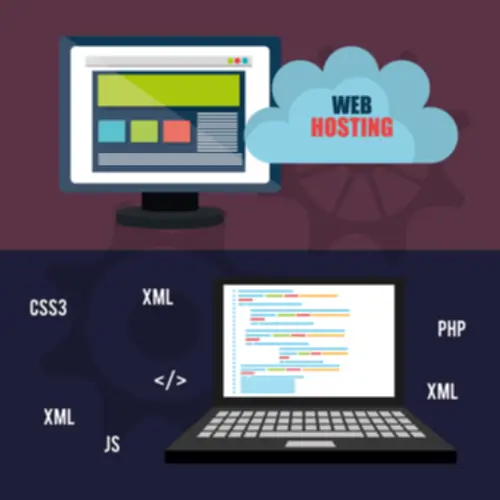Beyond continuous integration, Jenkins can automate steps in software program what is jenkins software supply, making it easier to deploy and release new versions. It allows for the automation of the deployment course of, ensuring you could release reliably at any time. Jenkins was created by Kohsuke Kawaguchi, a developer at Sun MicroSystems.
What Is Jenkins Multi Configuration Projects?
In a software program product development project at Nokia, there was a course of referred to as Nightly builds. Nightly builds could be regarded as a predecessor to Continuous Integration. It implies that every night an automatic system pulls the code added to the shared repository all through the day and builds that code. The concept is kind of just like Continuous Integration, however since the code that was constructed at night time was quite giant, locating and fixing of bugs was a real ache. As a end result, every commit made to the supply code within the repository was built. If the construct outcome shows that there’s a bug in the code, then the developers solely have to examine that specific commit.
Jenkins Git Integration – Helpful For Each Devops Skilled
- Jenkins could be configured to observe its personal efficiency and to generate reviews on various aspects of the event process.
- Jenkins Pipeline is a set or suite of plugins that provides support for implementation and integration of Continuous Delivery pipelines into Jenkins.
- With Jenkinsfile, the CD Pipeline can additionally be handled as a half of the applying that is versioned, dedicated, and reviewed like any other piece of code.
- Fresh strawberry flavoured full xylitol chewing gum incorporates vitamin C.
Jenkins has been round for much longer than other offerings on this house. For this cause, Jenkins is well understood, with a broad knowledge base, intensive documentation and abundant group sources. These resources make it easier to put in, handle and troubleshoot a Jenkins set up. One of some great advantages of Jenkins is that it might be extended utilizing plugins.
Information Administration Is Just For It? Assessing Conventional Code, Low-code, And Genai
So, Jenkins has turn into an indispensable device in helping them obtain those targets. Jenkins has been a key enabling expertise that’s increasingly serving to DevOps practices acquire widespread adoption in many organizations all over the world. Here, we are in a position to understand that the pipeline has been run twice, and the second run has been successful. To examine the logs of the second run, click on “#2” beneath Build History after which click on “Console Output”. You will be offered with a display screen to pick the sort of “Item” you want to create. As within the picture below, choose “Pipeline” and give this pipeline a reputation.
This automation helps to increase productivity, ensure code quality, and allow sooner supply of software program updates. Build in the Jenkins pipeline refers again to the placing together of individual coded elements from builders to create deployable applications that can run on a machine. This compilation process is critical to the software growth process because it is during this stage that source code files are mixed to make executable code. Builds are often created when the supply code is taken into account ready for implementation— it is both prepared for release or testing. The main function of Jenkins is to automate the continual integration and delivery processes in software program growth. It allows for the seamless constructing, testing, and deployment of functions, making certain sooner and more environment friendly development cycles.
After Oracle acquired Sun, the project was forked to remain open source and the fork was named Jenkins in 2011. The remoting component in the Jenkins structure is an executable JAR file answerable for communication between the Jenkins core and brokers. It enables decentralization of construct execution by distributing build jobs to multiple agents. This also permits parallel execution, leading to elevated scalability. A job represents a predefined set of actions carried out by the pipeline in a particular order.

Continuous supply is different from steady deployment in that it requires handbook approval earlier than new software builds are deployed into manufacturing. Over time, continuous supply and deployment options had been carried out in numerous Jenkins versions and projects. For example, the Jenkins X project was launched in 2018 with the objective of making a contemporary, cloud-native model of Jenkins. Jenkins X was designed for Kubernetes and uses it in its personal implementation. Its structure, technology and pipeline language are completely different from these of Jenkins. Other cloud-native technologies that Jenkins X uses embrace Helm, for serving to manage Kubernetes functions, and Tekton, a framework that additional assists with creating CI/CD systems.
Then it’s distributed to a central staging system, a pre-production system, or even a manufacturing setting when combined. Jenkins X provides suggestions for all pull requests, providing previews earlier than pushing code adjustments to the staging and production environments. It helps you incorporate authentication and reliability early on, preventing post-deployment surprises. You leverage the next degree of automation to enable frequent, safe, and predictable software program releases. You might want to modify your Jenkinsfile to enable it to run with the project.
Jenkins supplies artifact administration, which allows users to publish or archive regionally on the Jenkins server or on an exterior platform. This improves traceability, reproducibility, and reliability within the software development course of. As part of steady delivery, you might also use varied automation duties to handle dependencies and push deployment artifacts to appropriate repositories.
Server security is achieved in the identical way that some other server is secured. Access to where it resides, corresponding to a VM or bare-metal server, is configured to allow for the fewest variety of processes to speak with the server. This is accomplished via typical server operating system and networking security features.

As you finish this blog, you’ll not solely find out what’s Jenkins, additionally, you will achieve sufficient confidence to make use of Jenkins for continuous testing in DevOps. In this blog, we give an outline of Jenkins, how it’s used, and suggestions for teams ready to maneuver forward with integrating this popular open source CI/CD device. Since its growth in 2011, it’s the most most popular CI/CD tool used by developers in each early-stage startups and massive organizations.

Builds in Jenkins check with the stage during which the application supply code is compiled, examined, and packaged right into a deployable artifact. A construct may be triggered manually or mechanically, where the Jenkins automation server polls for changes within the source code repository. The construct includes various subtasks, similar to compiling the code, running unit checks, static code analysis, doc generation, and so forth. CD is a apply by which automation pipelines are used to handle software releases. It entails utilizing instruments that facilitate the creation of deployment artifact dependencies and setting environment-specific variables in a repeatable and dependable method.
At the time of what is Jenkins blog, it had near 1500+ plugins contributed by the neighborhood. Plugins help in customizing the experience with Jenkins, along with providing assist for accelerating activities associated to constructing, deploying, and automating a project. As you’ll find a way to see in the diagram offered above, on the left is the Remote supply code repository. The Jenkins server accesses the master setting on the left facet and the master environment can push right down to a number of different Jenkins Slave environments to distribute the workload. Continuous Deployment means automating the further phases of the pipeline mechanically or manually deploying the application/code to totally different environments like Dev, Test, and Production. Automating the build is the principle part of Continuous Integration and Continuous Deployment.
There are no variations in the performance, scalability, availability, or resilience of declarative and scripted pipelines. The pipeline execution engine of Jenkins is syntax-agnostic; i.e., scripted and declarative pipelines are executed in the identical method. The scripted syntax presents a fully-featured programming setting, permitting builders to implement complicated enterprise logic inside pipeline code.
Transform Your Business With AI Software Development Solutions https://www.globalcloudteam.com/